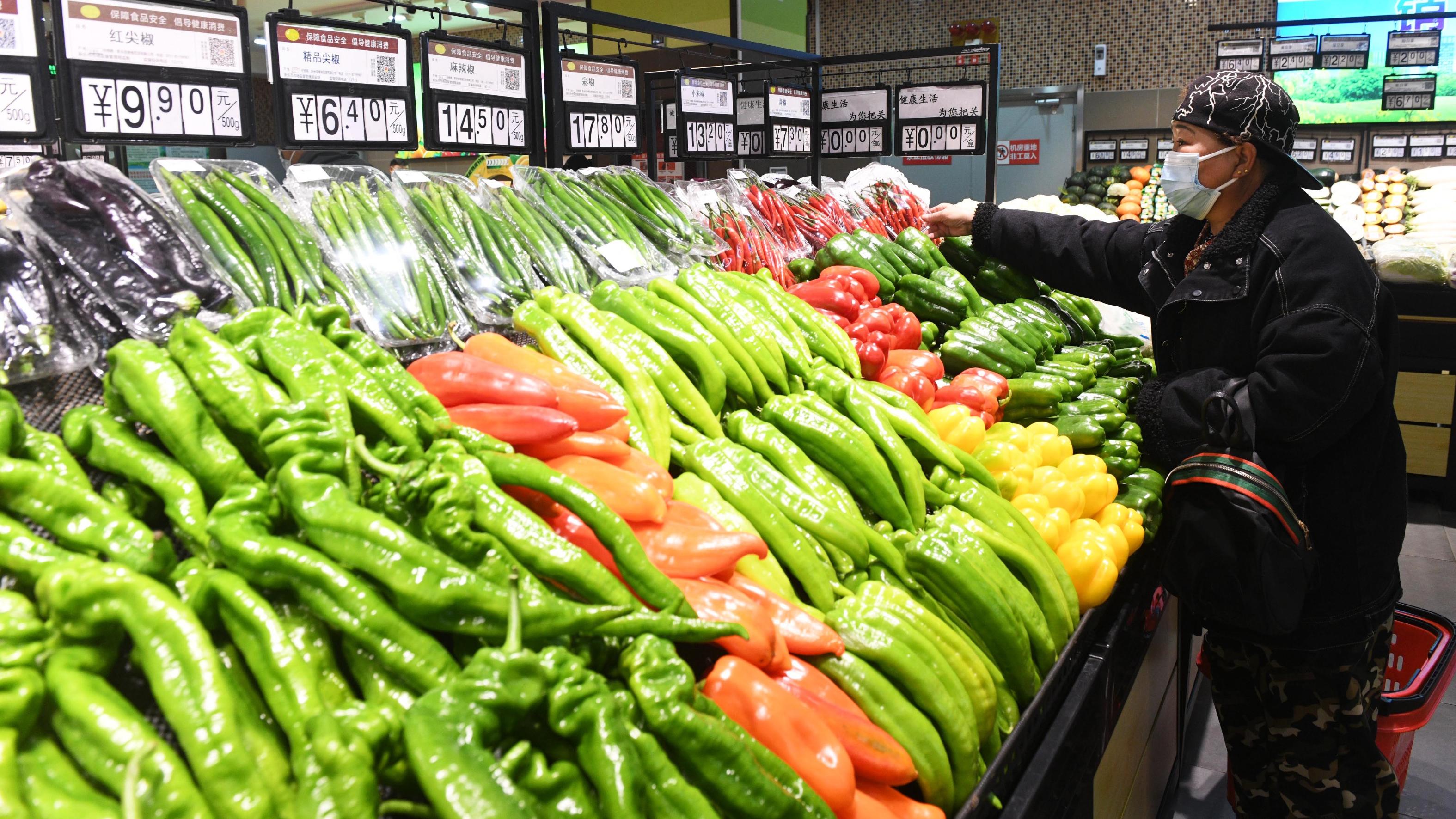 A consumer picks vegetables at a supermarket in Shijiazhuang, Hebei province, on Feb 10, 2023. (JIA MINJIE / FOR CHINA DAILY)
A consumer picks vegetables at a supermarket in Shijiazhuang, Hebei province, on Feb 10, 2023. (JIA MINJIE / FOR CHINA DAILY)
BEIJING - China's consumer inflation remained mild last month with sufficient market supply and warming demand, official data showed Thursday.
The consumer price index (CPI), a main gauge of inflation, edged up 0.1 percent year-on-year in April, according to the National Bureau of Statistics (NBS). The figure was lower than the 0.7-percent increase in March.
On a monthly basis, the prices were slightly down by 0.1 percent, narrowing from the 0.3-percent decline in the previous month.
NBS statistician Dong Lijuan attributed the slower year-on-year price increase to a high base in the corresponding period of 2022, when the inflation growth came in at 2.1 percent.
In breakdown, food prices continued to play a major role in dragging down the overall price level, retreating from the 2.4-percent increase a year ago to 0.4 percent last month. Poultry, fruit, cooking oil and pork saw weaker price growth, and vegetable prices dropped sharply
"In April, the market supply was generally sufficient and consumer demand gradually recovered," Dong said.
In breakdown, food prices continued to play a major role in dragging down the overall price level, retreating from the 2.4-percent increase a year ago to 0.4 percent last month. Poultry, fruit, cooking oil and pork saw weaker price growth, and vegetable prices dropped sharply.
ALSO READ: Economic rebound hopes to cool global inflation
Non-food prices inched up 0.1 percent, softening from the 0.3-percent growth in March, as energy prices registered a significant decline. However, transport and accommodation prices saw considerable upticks.
China's core CPI, deducting food and energy prices, was up by 0.7 percent from a year earlier and by 0.1 percent month-on-month.
PPI fell in April
The NBS data also showed that the producer price index (PPI), which measures costs for goods at the factory gate, dropped 3.6 percent year-on-year in April and on a monthly basis, edged down 0.5 percent.
The falling PPI was due to the fluctuation of international commodity prices, weak demand in domestic and foreign markets, and the high comparison base during the same period last year, Dong said.
ALSO READ: China's dynamic economy pivotal to regional growth, integration
 In this undated file photo, workers assemble new energy vehicles for overseas markets at a factory in Ganzhou. (ZHU HAIPENG / FOR CHINA DAILY)
In this undated file photo, workers assemble new energy vehicles for overseas markets at a factory in Ganzhou. (ZHU HAIPENG / FOR CHINA DAILY)
China's weak price level in recent months has stoked worries over deflation, but authorities have reiterated that such concerns are unnecessary.
The falling PPI was due to the fluctuation of international commodity prices, weak demand in domestic and foreign markets, and the high comparison base during the same period last year, said NBS statistician Dong Lijuan
NBS spokesperson Fu Linghui has said there is no deflation in the Chinese economy at present, and there will not be deflation in the coming period. Zou Lan, a central bank official, also said that the basis for either deflation or inflation in the long run does not exist as the aggregate supply and demand are balanced, the monetary conditions are reasonable and moderate, and residents' expectations are stable.
As the latest evidence of robust economic activity, China's gross domestic product grew 4.5 percent year-on-year in the first quarter this year, picking up pace from 3 percent in 2022 and 2.9 percent in the October-December period.
Analysts believe inflation will still be at a low level in the second quarter and gradually improve in the latter half of the year amid a steadily recovering economy.
READ MORE: PBOC: China has no long-term deflation or inflation basis
China aims to keep the inflation rate at around 3 percent for 2023. The country's consumer prices grew 2 percent from a year earlier in 2022.


